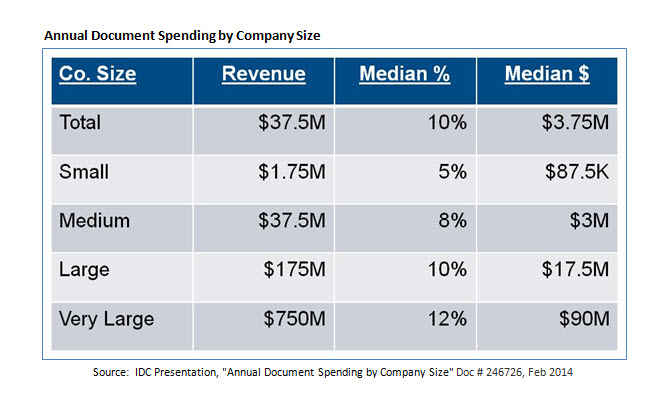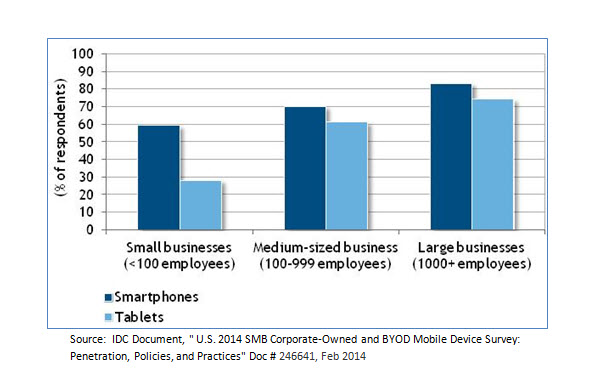By Angèle Boyd, IDC Corp.
April 2014
I was surprised to see in our business research that small businesses are lagging their bigger peers in using information technology in business-critical areas. As a percent of revenue, their spend rate is almost as high.
This is understandable since small businesses do not have the dedicated staff to evaluate IT investments against business goals. Everyone is on deck focused on bringing in business – selling, building product, and shipping it. This puts small businesses in a catch 22 situation: lack of IT investment can eventually cause growth to stall, or worse. Very few small businesses survive the first five years, it’s critical that IT infrastructure is in place to ensure long-term productivity.
Small businesses can accelerate productivity by embracing next generation document technology. New methods enable digitized document workflows that speed up how business gets done. Workflows can be tightly integrated across the document lifecycle:
- Front office and back office
- On- and off-premise
- On mobile and desktop devices
- In paper and digital forms
- Structured and unstructured content
Business process workflows are automated and optimized within and between departments (sales, design, manufacturing, shipping, accounting, customer support, legal, HR) to achieve key business goals.
The intelligent document is the foundation of solutions that address small business workflow challenges. Among all companies, small businesses are the most dependent on paper documents, and the rich content they contain needs to be captured intelligently and integrated into digital workflows. When so much business information is trapped in paper documents, the speed of business is greatly impaired. The information is not available where and when it is needed, it is manually entered, and often must be recreated because it is lost/can’t be found. The intelligent document allows for highly secure end-to-end workflows, while speeding up business transactions.
The intelligent document also enables line-of-business applications to talk to each other, something small businesses are far less likely to have than bigger businesses. It works with document solutions that enable intelligent capture, search across repositories, content management software, and collaborative software.
Small businesses are also rapidly trying to catch up with larger business in their use of the cloud to enable anywhere, anytime access from mobile devices like smartphones and tablets.
Cloud file storage services is one area where the gap with larger businesses is not as great, but there remains a need to ensure document workflow with these services is secure and integrated with line of business applications.
The best way for a small business without in-house IT resources to accelerate business processes is through an intelligent document system. When selecting an IT partner, be sure to ask these 5 questions, to make sure they can deliver a solution that’s aligned to your business goals:
- Have you ever worked with customers in my industry? Experience with other industry customers with workflows similar to yours is more important than other local customers, who may just be in the neighborhood.
- How can I keep my information, and my customer’s information secure? It’s important to know not only how a partner will safeguard against physical loss of information, but also to know how your confidential information is kept secure as it travels over the network, at the time of printing or scanning, and when stored in a private cloud.
- Do you have an established relationship with a technology vendor? Understand which products and solutions your IT partner is certified to sell and service, and how those products are the right fit for your organization.
- How will you assess my current environment? An IT partner who makes recommendations on optimized workflows based on your technology alone won’t take into account the human factors, and paper-based methods that are a part of running your business.
- Do I need to make a big up-front investment? You should probably be looking for providers that are leveraging the cloud and SaaS pricing models to make your technology investment affordable and minimize in-house resources.




